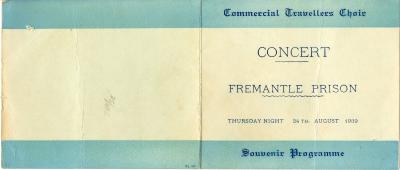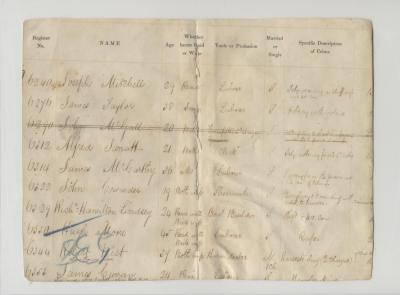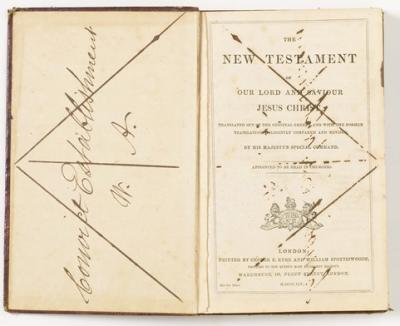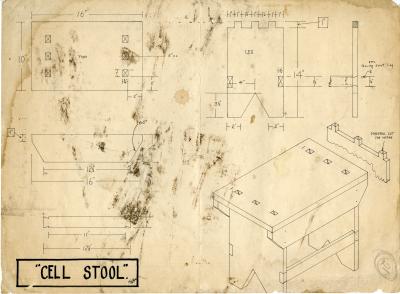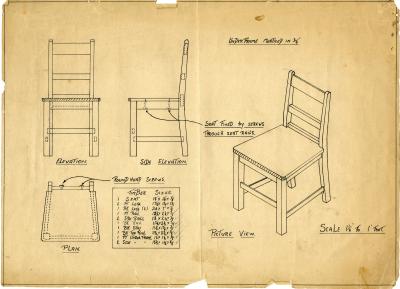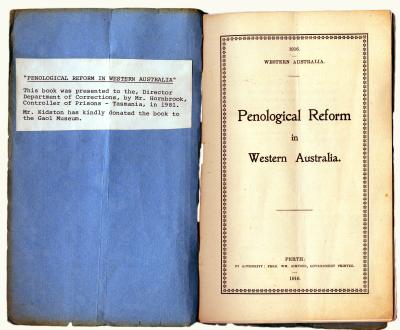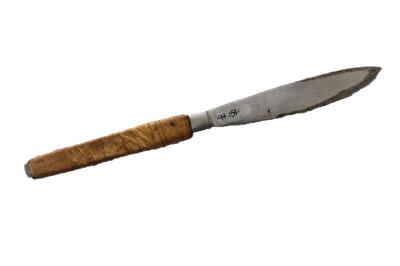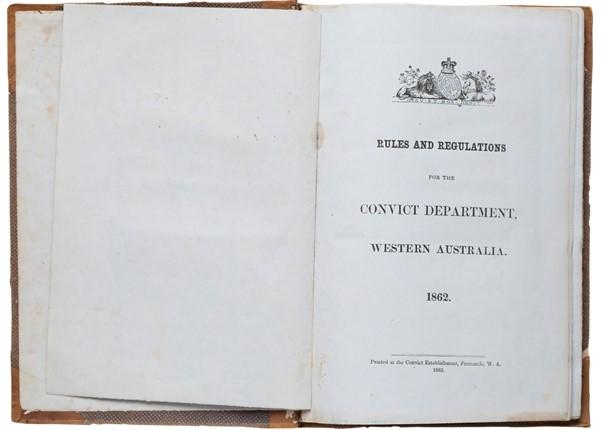RULES AND REGULATIONS FOR CONVICT DEPARTMENT WESTERN AUSTRALIA
1862Small, bound, printed book with brown hardback buckram covers and brown leather spine. Totalling 129 pages, some of which bear hand written annotations. Black print on blue paper. The title page reads 'RULES AND REGULATIONS / CONVICT DEPARTMENT / WESTERN AUSTRALIA / 1862 / Printed at the Convict Establishment, Fremantle, W. A. / 1862'. Handwritten in black ink on the front of the first page, are the words 'Rules and Papers'.
Provenanced to Fremantle Prison.
Details
Details
The inmates at the Convict Establishment lived their lives according to a strict set of rules. This 129 page book, titled Rules and Regulations Convict Department, Western Australia 1862, laid out the regulations that a convict was to abide by. This copy was printed in the Establishment’s print shop in 1862. B
reaches of the Convict Establishment’s rules were separated into two levels of severity; minor and aggravated. Examples of minor breaches of the rules and regulations included disobeying the orders of a Prison Warder, swearing, being caught with Convict Establishment property, and talking or misbehaving at divine service or prayer. Being guilty of minor breaches could result in seven days solitary confinement, be placed on a diet of bread and water, or forfeiting remission of your sentence. Aggravated offences against the rules and regulations were seen as much more severe, and therefore resulted in harsher punishments. If a convict was caught planning, or involved in, a mutiny, assaulting another convict or officer, escaping or attempting to escape, or wilfully or maliciously breaking and damaging prison property, they were charged with an aggravated offence. The punishment for breaking one of these rules was a stay of up to one month in solitary confinement, with 14 days on bread and water, with the added punishment of irons, depending on the offence. The offending convict could also be sentenced to corporal punishments such as flogging, or hard labour, or he could be removed to a lower class of imprisonment, which would hinder his privileges.
The solitary confinement building at the Convict Establishment had 18 cells in total, out of which 12 were classed as ‘light’ and six were ‘dark’. All were fitted with two doors for extra security, and which made the cells practically soundproof, adding to the feeling of isolation. The cells were furnished with a bare bed and no mattress, a bible and sometimes a blanket. Dark cells were a particularly harsh form of punishment, as those convicts quickly became disorientated, unable to tell day from night. A diet of bread and water also added to the harshness of these punishments. The men who were sentenced to solitary confinement were usually back in the Main Cell Block within a month, but after 1863 men could be sentenced to solitary for up to three months at a time. In 1866 it was reported that, “…prisoner 8400 Joseph Price be kept in a dark cell upon bread and water until the surgeon reports that he can bear it no longer and that then he be worked till further orders in the chain gang inside the Prison.”
The Rules and Regulations Act governing the Convict Establishment were continuously modified and kept up to date. After the update in 1862, the Act was reviewed and extensively modified into the Prisons Act 1903-18.
This book containing the Rules and Regulations at the Convict Establishment has very high historic, social and research significance. It outlines the system by which convicts had to live everyday whilst imprisoned at Fremantle. It has strong provenance to the site, and is a rare example which has survived in good condition. As an important example of the way in which the lives of convicts at Fremantle were governed, directly related to the period from which the site gains its World Heritage Listing, this artefact has international significance.


